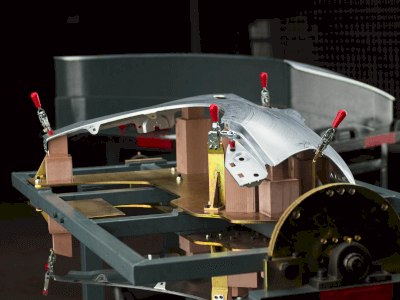What Is a Sheet Metal Tester?
 A sheet metal tester is a process to check whether sheet metal has been created according to specifications and drawings before shipment.
A sheet metal tester is a process to check whether sheet metal has been created according to specifications and drawings before shipment.
Sheet metal, also known as sheet metal, is thin, flattened metal. Sheet metal is also called sheet metal, or sheet metal, when the material is plastically processed at room temperature. Inspectors check inspection standards based on drawings and specifications, and inspect the sheet metal tester’s dimensions, weight, color, thickness, and appearance to make a pass/fail decision as the final product. When aesthetics are involved in the appearance, it is difficult for the inspectors to make a judgment.
Uses of Sheet Metal Testers
Typically, sheet metal tester quality inspections check the following two points:
- Whether the specified processing is finished with high accuracy.
- Whether the surface of the processed product is free of scratches and burrs
Quality control methods are used to prevent defective products. However, it is difficult to introduce quality control methods unless you are familiar with them on a daily basis. Quality control awareness can solve familiar problems. For example, when a defect is found on a product, the worker considers whether the defect could have been caused by his or her own work methods. As a result, they can find and implement improvements in their daily work. Once you are familiar with the above, you can systemize your quality control measures in the following flow.
- Collect data
- Graph the obtained data and clarify the focus points.
- Conduct an investigation focusing on the narrowed focus points, and graph and chart the obtained data to create a full-fledged quality control system
Principles of Sheet Metal Testers
Mechanical sheet metal testers require products to be machined to a relatively high degree of accuracy and to be finished to a good condition with no scratches or burrs. In terms of dimensional accuracy, many of the product drawings are digitized electronically using CAD and other methods, making it difficult for errors to occur. However, mistakes can still occur during the blank removal (disassembly) stage, which is necessary for processing, due to the oversight of sheet thickness and elongation caused by processing.
On the other hand, scratches on sheet metal are more likely to occur during the transportation and processing stages when obtaining materials. Even scratches that are difficult to notice at the part fabrication stage may become apparent in the paint finish and result in a defective product.
The occurrence of burrs in sheet metal is mainly caused by forgetting to perform human deburring operations and variations in quality. The occurrence of defective products leads to loss of processing costs, including material costs and painting, and delays in product delivery, so companies need to take countermeasures. Sheet metal tester is important in daily operations to prevent the occurrence of defective products.
Structure of Sheet Metal Testers
A wide variety of sheet metal testers are available to check the dimensional accuracy of sheet metal.
To meet safety requirements in sheet metal design, various performance requirements, such as required strength, weight, cost, ease of repair, and quality, are designed into the appropriate part shape through all kinds of analysis and simulation. As a result, sheet metal parts have many complex configurations, and it is very difficult to create each one in the designed shape and ensure the necessary dimensional accuracy by combining parts with each other.
Sheet metal testers are always on site to show the exact shape of sheet metal parts, which is necessary to shorten development time and ensure quality. A wide variety of inspection tools are available for different part sizes and configurations.
Types of Sheet Metal Testers
Depending on the application and measurement accuracy, the right measuring tool should be used for sheet metal tester applications. For length measurement, a steel straightedge, steel tape measure, caliper, micrometer, or height gauge is used. For angle measurements, right angle rulers and protractors can be used.
Dial gauges measure the accuracy of machines and products. Narrow gaps that cannot be measured with calipers can be measured with a thickness gauge. Pin gauges are rods made to a given size. It is inserted into a hole in a product to check if the hole diameter is in accordance with the standard.
How to Choose a Sheet Metal Tester
To maintain high product quality, inspection software for precision sheet metal testers is available. Specifically, inspection software can evaluate unbent, BR unbent, wrong bending dimensions, reverse bending, drilling unbent, press-fit nut misalignment, press-fit nut presence, etc. When detection and judgment are achieved through simple verification, judgment accuracy and processing time can also be evaluated.